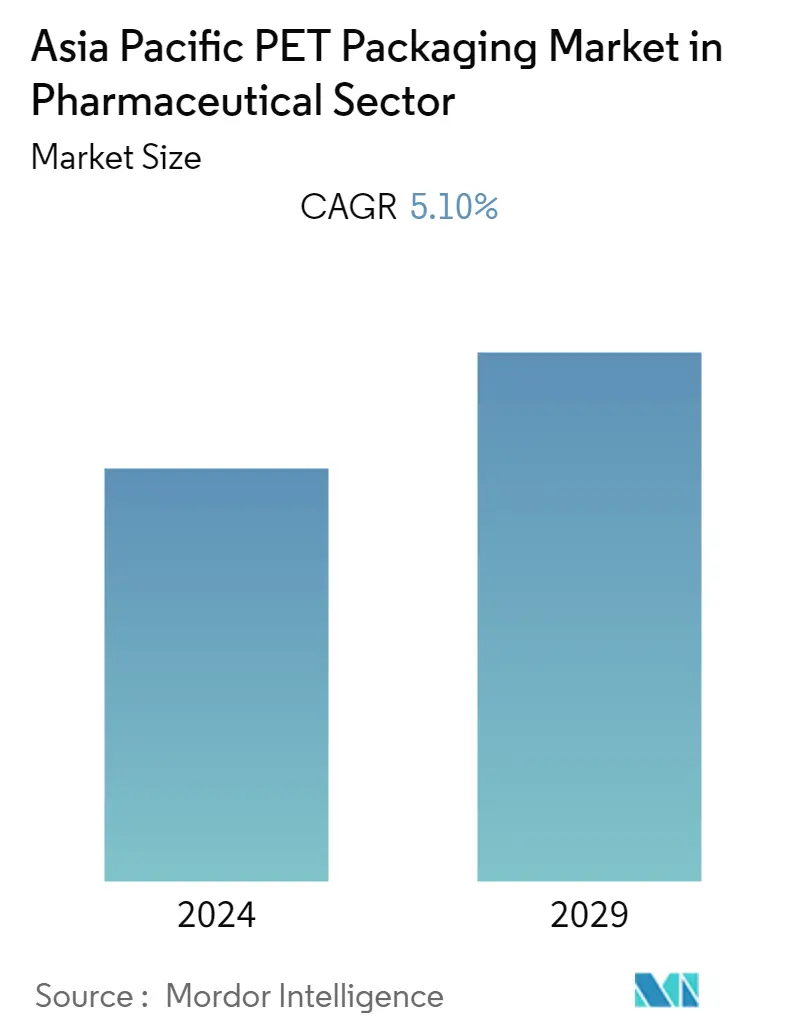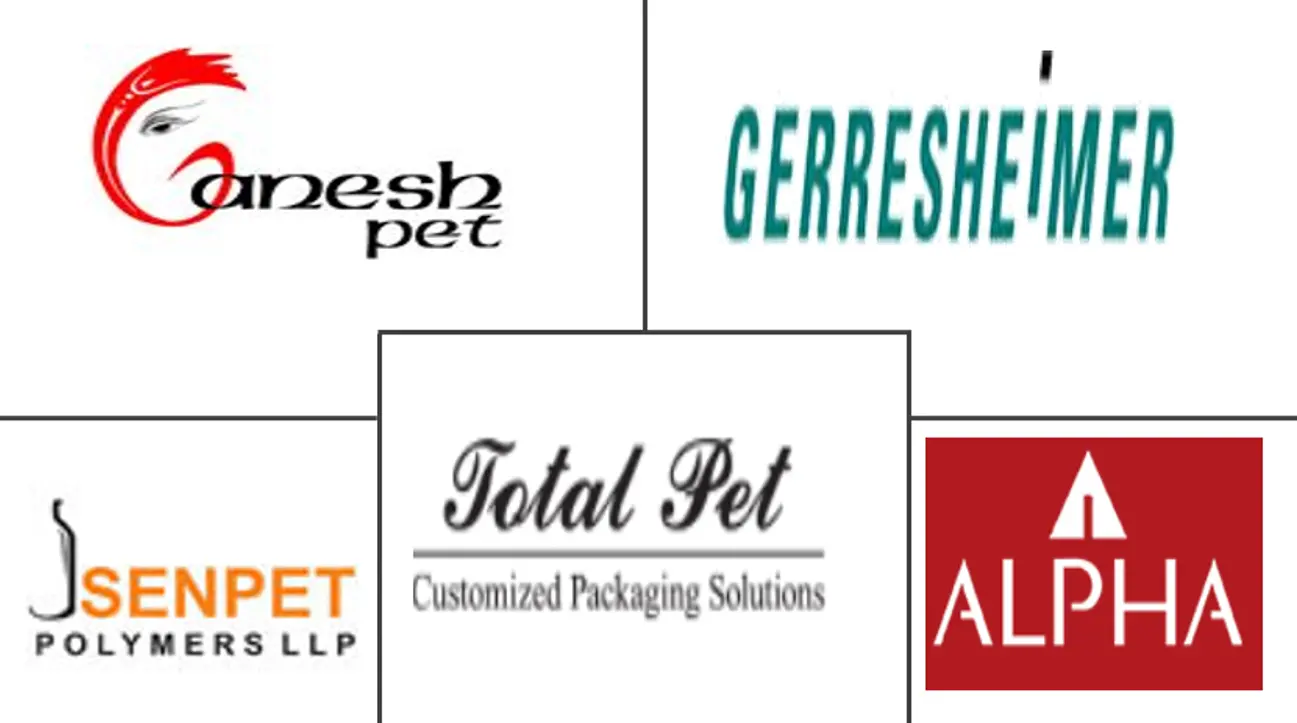Market Size of Asia Pacific PET Packaging Industry in Pharmaceutical Sector

| Study Period | 2019 - 2029 |
| Base Year For Estimation | 2023 |
| Forecast Data Period | 2024 - 2029 |
| Historical Data Period | 2019 - 2022 |
| CAGR | 5.10 % |
| Market Concentration | High |
Major Players
*Disclaimer: Major Players sorted in no particular order |
Need a report that reflects how COVID-19 has impacted this market and its growth?
APAC Pharmaceutical Sector PET Packaging Market Analysis
The Asia-Pacific PET packaging market in the pharmaceutical sector (henceforth, referred to as the market studied) was valued at USD 2652 million in 2019, and it is projected to reach USD 3540 million by 2025, registering a CAGR of 5.1% during the period of 2020-2025. Plastic packaging is becoming more popular than other products, as a plastic package is light in weight and easier to handle. Similarly, even the major pharmaceutical manufacturers in the Asia-pacific region prefer to use plastic packaging solutions, owing to their lower cost of production. Moreover, polyethylene terephthalate (PET) polymers are growing in plastic bottling applications in the pharmaceutical industry.
- According to a study conducted by the PET Packaging Association For Clean Environment (PACE) and National Chemical Laboratory (NCL), in 2019, an estimated 80,000- 85,000 metric ton of PET products were used in the Indian pharmaceutical sector.
- Manufacturers prefer PET to other plastic packaging products, as it accounts for the minimum loss of raw material during the manufacturing process as compared to other plastic products. Its ability to add multiple colors and designs has made it a preferred choice for the industry players. In addition, PET offers safety and quality standards, which is why it is witnessing a predominant usage in the pharmaceutical sector.
- Furthermore, the adoption of PET can lead to nearly 90% weight reduction, as compared to glass, allowing a more economical transportation process. Currently, plastic bottles made of PET are widely replacing the heavy and fragile glass bottles in the pharmaceutical industry in the Asia-Pacific region. For instance, it is possible to transport 30,000 100-ml PET bottles in a truck, as opposed to only 18,000 glass bottles, according to the PACE and NCL 2019 study. This reduces the transportation cost and environmental impact.
- Moreover, the pharmaceutical market in the region is growing, with the presence of countries like China, India, and Japan, among others, where the demand for pharmaceutical products is increasing due to the population and rising diseases.
- The healthcare and pharmaceutical sector in China is one of the world's largest markets, primarily driven by its aging population. According to Pharmaceutical Technology, the value of China's pharmaceutical market was forecast to surge to almost USD 574 billion by 2022. Hence, there is a growing possibility for the domestic players, as they might experience an increase in the demand for PET bottles from these companies.
- With the COVID-19 outbreak and measures taken to curb the spread of the virus, PET bottles such as hand sanitizer and handwash bottles have seen a surge in demand, which is likely to continue for the next year or two. Likewise, the manufacturing capability will also see a shift in production towards such trends,
